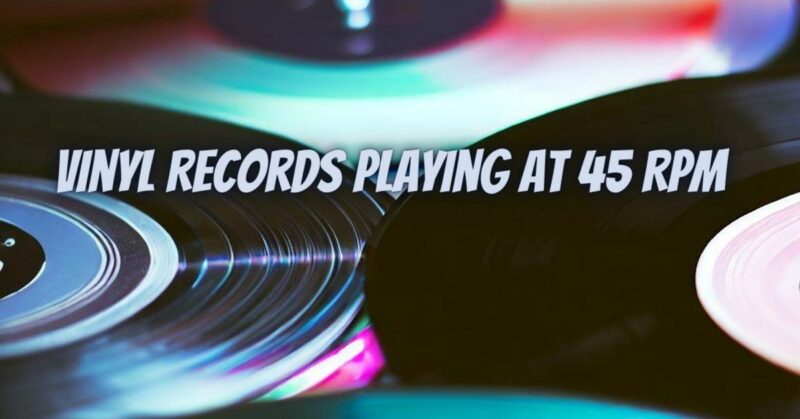Vinyl records have long been celebrated for their unique analog sound, tactile appeal, and nostalgic charm. Most vinyl records are traditionally played at 33 1/3 revolutions per minute (RPM) or 78 RPM for older shellac records. However, there’s another speed setting that’s equally significant in the vinyl world—45 RPM. In this article, we’ll explore the role of 45 RPM in vinyl records, its advantages, and the types of records that are typically played at this speed.
The Basics of 45 RPM
Definition: 45 RPM (revolutions per minute) is a vinyl record playback speed that’s faster than the standard 33 1/3 RPM. Records played at 45 RPM spin at 45 revolutions per minute, resulting in a shorter playing time for each side of the record.
History: The 45 RPM format was introduced by RCA Victor in 1949 as a single-play format. These smaller records, often referred to as “singles” or “45s,” typically contained one song on each side and were intended for popular music, allowing listeners to quickly access hit songs.
Advantages of 45 RPM
Playing records at 45 RPM offers several advantages:
- Higher Fidelity: Because the grooves on a 45 RPM record are spread over a smaller surface area, they can provide higher fidelity and better sound quality, especially for singles that feature a single song on each side.
- Reduced Surface Noise: The increased speed reduces surface noise and hiss, resulting in a cleaner and quieter listening experience.
- Enhanced Bass: 45 RPM records often have better bass response and dynamics, making them ideal for music genres that rely on deep bass and punchy rhythms.
- Improved Clarity: The faster speed allows for more detailed and clear playback, which can be especially noticeable on high-end audio systems.
Types of Records Played at 45 RPM
- Singles: As mentioned earlier, the 45 RPM format was originally designed for single-song releases. Many hit songs from the 1950s to the 1980s were released as 45 RPM singles, and they remain popular among collectors.
- EPs (Extended Plays): EPs are similar to singles but typically contain more tracks, often four to six songs, and are also played at 45 RPM. They offer a compact collection of music from an artist.
- Audiophile and High-End Releases: Some audiophile and high-end vinyl releases, especially those focused on delivering the best sound quality, are pressed as 45 RPM records. These releases often use heavyweight vinyl and meticulous mastering techniques to maximize audio quality.
- Reissues: Modern reissues of classic albums may be pressed as 45 RPM records to achieve better sound quality, particularly for albums known for their sonic excellence.
Playback Considerations
To play 45 RPM records, you’ll need a turntable with a switch or setting that allows you to adjust the playback speed. Additionally:
- Make sure you have the appropriate stylus or cartridge for 45 RPM playback.
- Be aware that 45 RPM records have shorter playing times per side, so you may need to flip the record more frequently.
Vinyl records played at 45 RPM offer a different spin on the analog listening experience. While they are often associated with singles and hit songs, they also have a place in the world of audiophile listening, providing enhanced fidelity, reduced noise, and improved clarity. Whether you’re exploring vintage singles or enjoying the superior sound quality of modern audiophile releases, 45 RPM records continue to be an essential part of the vinyl enthusiast’s collection.


